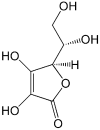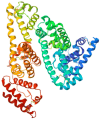Antioxidant Molecules in the Human Vitreous Body During Prenatal Eye Development
- PMID: 41008946
- PMCID: PMC12466766
- DOI: 10.3390/antiox14091041
Antioxidant Molecules in the Human Vitreous Body During Prenatal Eye Development
Abstract
The structures of the developing eye may be damaged as a result of the impact of reactive oxygen species (ROS) interacting with different cellular components. The antioxidant molecules found in the eye, especially in the vitreous body-the largest component of the eye, playing a crucial role in the formation of structures and functions of the developing eye-provide protection to the eye tissues from ROS. This review considers various antioxidant molecules (ascorbic acid, lutein, bilirubin, uric acid, catecholamines, erythropoietin, albumin, and alpha-fetoprotein) that have been found in the human vitreous body during the early stages of pregnancy (10-31 weeks of gestation) and their functions in the development of the eye. The presence of some molecules is transient (lutein, AFP), whereas a temporal decrease (albumin, bilirubin) or increase (ascorbic acid, erythropoietin) in the concentrations of other antioxidants is observed. Since the actual overall content of antioxidants in the developing vitreous body is probably much higher than that found to date, further research is needed to study antioxidants there. It is especially important to study the antioxidant status of the vitreous body at the earliest stages of its development. Antioxidants found suggest their use for the prophylactic of ocular diseases during pregnancy and finding new antioxidants could create an additional opportunity in this regard.
Keywords: antioxidants; human eye; prenatal development; reactive oxygen species; vitreous body.
Conflict of interest statement
The authors declare that they have no competing interests.
Figures










References
-
- Hogan V.J., Alvarado J.A., Weddel J.E. Histology of the Human Eye. W.B. Saunders Company; Philadelphia, PA, USA: 1971. 687р
Publication types
Grants and funding
LinkOut - more resources
Full Text Sources

